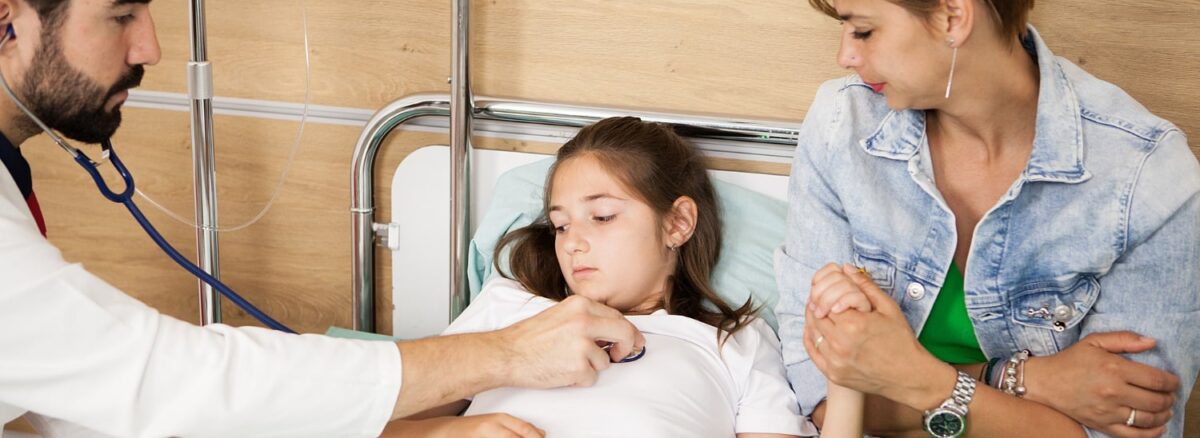Pediatric emergencies are situations that require immediate medical attention for infants, children, and adolescents. These emergencies can encompass a wide range of medical conditions, from minor injuries to life-threatening illnesses. Providing effective pediatric care during emergencies is crucial, as young patients require specialized attention due to their unique physiological and psychological characteristics. In this blog, we will delve into the concept of pediatric emergencies, explore the challenges associated with pediatric care, and highlight the key principles that guide healthcare professionals in managing such critical situations.
Defining Pediatric Emergencies
Pediatric emergencies are medical situations that pose an immediate risk to the health and well-being of children and adolescents, necessitating prompt intervention to prevent further complications or even death. These emergencies can encompass a broad spectrum of scenarios, including trauma, respiratory distress, seizures, severe infections, toxic ingestions, and more. The unique anatomical and physiological differences between children and adults make it imperative for healthcare providers to adapt their approach to deliver effective pediatric care during emergencies.
Challenges in Pediatric Care
Anatomical and Physiological Differences
Children’s bodies are still developing, and their anatomy and physiology differ significantly from adults. These differences can impact the presentation of symptoms, response to treatments, and overall management strategies. For instance, infants have smaller airways and a higher metabolic rate, which can lead to rapid deterioration in respiratory conditions.
Communication Barriers
Depending on their age and developmental stage, children might have difficulty communicating their symptoms or understanding medical instructions. This can make it challenging for healthcare providers to accurately assess the severity of the situation and provide appropriate care.
Psychological Considerations
Pediatric emergencies can be particularly distressing for both the child and their caregivers. Anxiety, fear, and the unfamiliar hospital environment can exacerbate the child’s condition and complicate the healthcare provider’s efforts to stabilize them.
Medication Dosages and Formulations
Calculating and administering medication dosages for children requires precision. Medication concentrations and formulations suitable for adults might not be appropriate for pediatric patients, making accurate dosing a critical aspect of pediatric care.
Principles of Pediatric Emergency Care
Rapid Assessment and Stabilization
Time is of the essence in pediatric emergencies. Healthcare providers need to quickly assess the child’s condition, identify life-threatening issues, and initiate interventions to stabilize the patient’s vital signs.
Age-Appropriate Communication
Tailoring communication to the child’s developmental stage is essential. For younger patients, nonverbal cues and distractions (e.g., toy games) can help alleviate anxiety. For older children, explaining procedures in simple terms can build trust and cooperation.
Family-Centered Approach
Involving parents or caregivers is crucial for both emotional support and obtaining a vital medical history. Collaborating with family members helps ensure accurate information and increases the likelihood of adherence to treatment plans.
Specialized Equipment and Medications
Healthcare facilities should be equipped with pediatric-specific medical equipment and medications. This includes appropriate-sized airway equipment, intravenous catheters, and drug dosages tailored to a child’s weight and age.
Continuous Monitoring and Reassessment
Pediatric patients can experience rapid changes in their condition. Regularly reassessing vital signs and clinical status helps identify any deterioration early and adjust the treatment plan accordingly.
Conclusion
Pediatric emergencies demand specialized attention and care due to the unique physiological, psychological, and developmental characteristics of young patients. Healthcare providers must be well-equipped to handle a wide range of emergencies, from minor injuries to life-threatening conditions. By adhering to the principles of rapid assessment, age-appropriate communication, family involvement, and specialized interventions, healthcare professionals can ensure the best possible outcomes for children in critical situations. Providing effective pediatric care not only requires medical expertise but also empathy and a deep understanding of the challenges children and their families face during emergencies.

